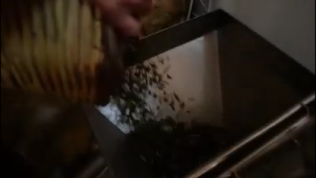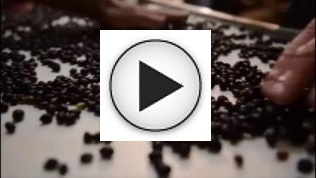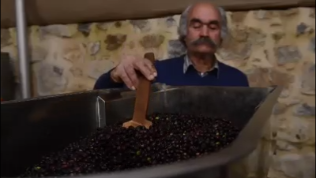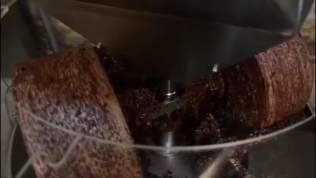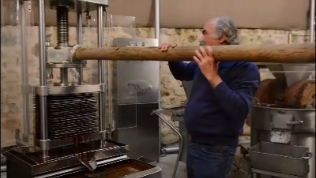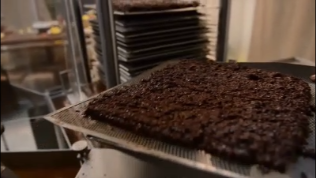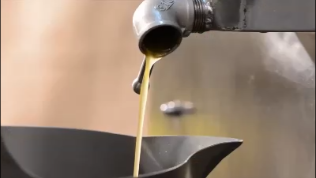Olive oil production
The traditional olive oil manufacturing process

Crop defoliation and washing
A conveyor belt takes the crop to the defoliation spot.
After the leaves and debris have been removed, the crop falls into a washbasin and then undergoes sieving. Finally, the crop is separated by the experienced producer's hand, allowing only the finest of it to move on to the olive oil production stage.
The quality of the olive oil depends largely on the crop quality. Scaling of the crop is available after the sorting belt.

Malaxing
The olive paste is then taken to the malaxer.
Millstones knead the paste in order for the juices contained inside it to be naturally released. The use of the stone allows for the production of high quality olive oil.
Since no heat is being added during this process, the malaxing time needed is longer. The final result is worth the additional wait, though.

Press
The separation of the liquid from the solid ingredients of the paste is achieved by pressing it manually, or automatically, using a hydraulic system.
The speed at which the pressure is applied is low and steady, so that the separation takes place unforcedly.
The final pressure, applied by the hydraulic system, is enough to maximize the extraction of the liquids.

Liquid separation
The olive oil, mixed with the rest of the olive crop liquid products, is taken to the separator. The difference of density between the olive oil and the other liquids allows it to be extracted without the use of any mechanical means.
It is there that the olive oil with float above the rest of the substances. The highest quality always tends to float, after all!
After the separation has been completed, the olive oil is taken from the seperator's overflow to the collection container.





